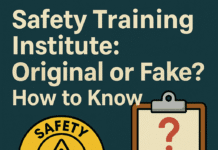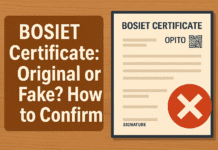
ISO 9001:2015 Quality Management: A Comprehensive Guide
Introduction
Understanding ISO 9001:2015
ISO 9001:2015 Quality Management : ISO 9001:2015 is an internationally recognized standard for Quality Management Systems (QMS). It sets out the criteria for a quality management system and is based on a number of quality management principles, including strong customer focus, involvement of top management, a process approach, and continual improvement.
Benefits of ISO 9001:2015 Certification
ISO 9001:2015 certification offers numerous advantages to organizations across various industries.
Improved Quality
One of the primary benefits of ISO 9001:2015 certification is the improvement in the quality of products and services. By adhering to the standards and processes outlined in ISO 9001:2015, organizations can consistently deliver high-quality products and services to their customers.
Enhanced Customer Satisfaction
ISO 9001:2015 places a strong emphasis on customer satisfaction. By meeting customer requirements and exceeding their expectations, organizations can build trust and loyalty among their customer base.
Streamlined Processes
ISO 9001:2015 encourages organizations to adopt a process-based approach to quality management. This leads to streamlined and efficient processes, reducing waste and increasing productivity.
Key Principles of ISO 9001:2015
ISO 9001:2015 is built on a set of seven quality management principles that provide a framework for achieving business excellence.
Customer Focus
Organizations should understand and meet customer needs and expectations.
Leadership
Effective leadership is essential to establish unity of purpose and direction within the organization.
Engagement of People
Involving and empowering employees helps in achieving the organization’s objectives.
Process Approach
A systematic approach to managing processes leads to more efficient outcomes.
Improvement
Continuous improvement should be a permanent objective of the organization.
Evidence-Based Decision Making
Decisions should be based on the analysis and evaluation of data and information.
Relationship Management
Successful organizations manage their relationships with relevant interested parties.
ISO 9001:2015 Certification Process
Gap Analysis
The journey towards ISO 9001:2015 certification typically begins with a gap analysis. This involves assessing the organization’s current processes and identifying areas that need improvement to meet ISO standards.
Documentation
Creating and maintaining documentation of processes, procedures, and policies is crucial for ISO 9001:2015 compliance.
Training
Employees must be trained to understand and implement the ISO 9001:2015 requirements effectively.
Internal Audits
Regular internal audits help identify non-conformities and areas for improvement.
Certification Audit
An accredited certification body conducts a thorough audit to determine if the organization meets ISO 9001:2015 requirements.
Implementing ISO 9001:2015
Setting Quality Objectives
Organizations must set measurable quality objectives that align with their overall business goals.
Risk-Based Thinking
Identifying and addressing risks and opportunities is a key aspect of ISO 9001:2015.
Continual Improvement
Continuous improvement is at the core of ISO 9001:2015, driving ongoing success.
Monitoring and Measurement
Regularly monitoring and measuring processes helps ensure compliance and effectiveness.
Maintaining ISO 9001:2015 Certification
Regular Audits
To maintain certification, organizations must undergo regular audits to demonstrate continued compliance.
Updates and Revisions
ISO standards are periodically revised, and organizations must stay updated to remain certified.
Industries Benefitting from ISO 9001:2015
ISO 9001:2015 certification is applicable across various industries.
Manufacturing
Manufacturers use ISO 9001:2015 to enhance product quality and safety.
Healthcare
In healthcare, ISO 9001:2015 ensures patient safety and efficient processes.
Information Technology
IT companies use ISO 9001:2015 to deliver reliable software and services.
Construction
In construction, ISO 9001:2015 improves project management and safety.
Challenges in Implementing ISO 9001:2015
Resistance to Change
Employees may resist changes in processes and procedures required for ISO 9001:2015 compliance.
Resource Allocation
Allocating resources for training and compliance efforts can be challenging for some organizations.
Conclusion
ISO 9001:2015 is a powerful tool for organizations seeking to enhance their quality management systems. By adhering to its principles and processes, companies can improve product and service quality, customer satisfaction, and overall efficiency.
OSHA Standards: A Guide to Health and Safety Compliance
A Comprehensive Guide to OSHA Standards
OSHA Requirements for Employers
Occupational Safety and Health Regulations in the USA
Safety Courses in United States
FAQs
What is ISO 9001:2015?
ISO 9001:2015 is an international standard for Quality Management Systems (QMS) that sets out the criteria for a quality management system.
How can ISO 9001:2015 benefit my business?
ISO 9001:2015 certification can lead to improved quality, enhanced customer satisfaction, and streamlined processes.
What are the key principles of ISO 9001:2015?
The key principles of ISO 9001:2015 include customer focus, leadership, engagement of people, process approach, improvement, evidence-based decision making, and relationship management.
What is the certification process for ISO 9001:2015?
The certification process involves gap analysis, documentation, training, internal audits, and a certification audit by an accredited body.
How can a company maintain ISO 9001:2015 certification?
Companies can maintain certification through regular audits and staying updated with ISO standards and revisions.
























